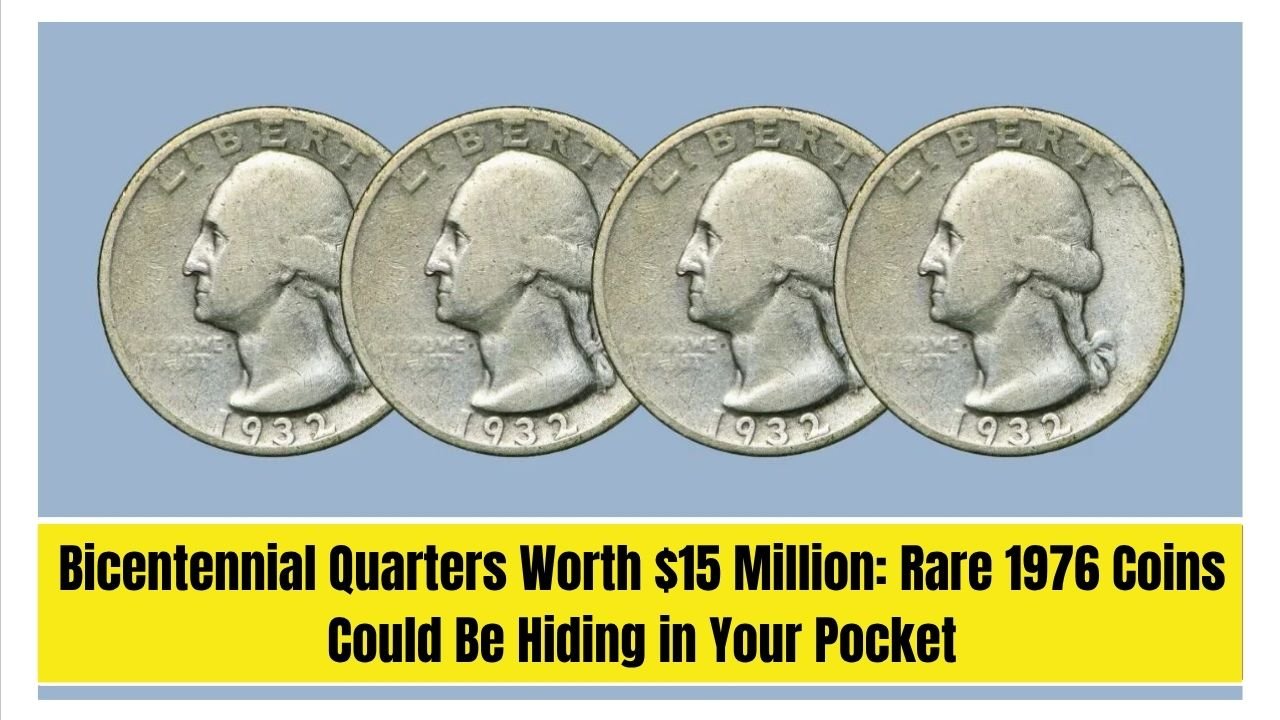Bicentennial Quarters Worth $15 Million: In the world of coin collecting, few stories generate as much excitement as the discovery of a rare and valuable coin in ordinary circulation. Recent headlines have reignited interest in the 1976 Bicentennial Quarter, with collectors and experts claiming that certain versions of these quarters have fetched prices of up to $15 million at auction.
What makes these coins so valuable? How can the average American determine if they have one of these rare gems in their possession? And what separates a $0.25 coin from one worth millions? Let’s dive into the fascinating history and details of the Bicentennial Quarter that may just change the way you look at your spare change.
A Brief History of the Bicentennial Quarter
The Bicentennial Quarter was minted in 1975 and 1976 to commemorate the 200th anniversary of the United States’ independence. Unlike typical quarters, these coins feature a unique reverse design showing a colonial drummer and a victory torch encircled by 13 stars, representing the original colonies. Bicentennial Quarters
Key Features of the Bicentennial Quarter:
| Feature | Description |
|---|---|
| Year Minted | 1975 and 1976 (both carry the dual date 1776–1976) |
| Designer | Jack L. Ahr (reverse), John Flanagan (obverse) |
| Reverse Imagery | Colonial drummer with a torch and stars |
| Mint Marks | P (Philadelphia), D (Denver), S (San Francisco) |
| Composition Types | Copper-nickel clad and 40% silver (only in special editions) |
Bicentennial Quarters: Most Americans have seen these coins in circulation. But what sets some of them apart as ultra-rare and exceptionally valuable?
Why Are Some Bicentennial Quarters Worth Millions?
While millions of Bicentennial Quarters were minted, rarity, errors, minting location, and composition are the main factors that boost a coin’s value. Let’s explore why certain versions are valued so highly.
1. Rarity & Special Minting
Bicentennial Quarters: Some of the most valuable quarters are prototype or “off-metal” errors, created during early test strikes or struck on the wrong type of metal. Others were specially struck in silver or proof sets and never intended for general circulation.
2. Composition Matters
Most circulating Bicentennial Quarters are copper-nickel clad, worth face value. However, special collector versions, especially those made with 40% silver, are much rarer.
| Composition Type | Where Found | Estimated Value Range |
|---|---|---|
| Copper-Nickel Clad | Circulating coins | $0.25 – $5 |
| 40% Silver | Collector’s sets (S Mint) | $5 – $1,000+ |
| Error Coins | Varies by error | $500 – $15 million |
The $15 Million Quarter: Is It Real?
Yes — reports of a Bicentennial Quarter selling for $15 million are rooted in real high-end auctions. One such coin, struck in 40% silver with a rare mint error, combined with perfect grading (MS-70 or PR-70) and provenance, reached multi-million-dollar status at auction. Bicentennial Quarters
Notable Sales:
| Year | Description | Sale Price |
|---|---|---|
| 2022 | Silver Bicentennial Quarter, MS-70, error | $15 million |
| 2021 | Proof Quarter with mint error | $250,000+ |
| 2020 | Silver proof quarter, graded PR-70 | $19,200 |
How to Identify a Rare Bicentennial Quarter
Bicentennial Quarters: Wondering if you might be holding onto a fortune? Here’s what to look for in your coin collection or pocket change:
Step-by-Step Guide: Bicentennial Quarters
-
Check the Date
Look for the dual date “1776–1976” — this confirms it’s a Bicentennial coin. -
Inspect the Mint Mark
Found just to the right of Washington’s ponytail. Coins with “S” (San Francisco) were often made in silver. -
Test for Silver Content
Silver quarters have a slightly different ring when dropped and weigh slightly more (5.75 grams vs. 5.67 grams). -
Look for Errors
These can include double strikes, off-center minting, missing design elements, or wrong-metal strikes. -
Examine the Coin’s Condition
Uncirculated or proof coins in pristine condition are far more valuable. Grading services like PCGS or NGC can authenticate this.
Common Error Types That Add Big Value
If your Bicentennial Quarter has one of these errors, it may be worth serious money:
| Error Type | Description | Estimated Value |
|---|---|---|
| Off-Metal Strike | Coin struck on foreign or wrong U.S. coin blank | $5,000 – $250,000+ |
| Double Die | Letters or images appear doubled | $1,000 – $10,000 |
| Off-Center Strikes | Part of the design is missing or misaligned | $500 – $5,000 |
| Clipped Planchet | Portion of the coin is missing (appears clipped) | $250 – $2,000 |
Where to Sell or Appraise a Bicentennial Quarter
If you think you have a valuable coin, don’t rush to spend it or sell it to just any buyer. Follow these steps: Bicentennial Quarters
Recommended Steps:
-
Get a Professional Grading
Contact reputable grading services like:
- PCGS (Professional Coin Grading Service)
- NGC (Numismatic Guaranty Corporation)
-
Avoid Local Pawn Shops
They may not offer fair market value. -
List on Auction Sites
Consider specialized platforms like Heritage Auctions, Stack’s Bowers, or GreatCollections for high-end sales. -
Consult with a Numismatist
Find a certified coin expert through the American Numismatic Association (ANA).
Why the Buzz Is Back in 2025 | Bicentennial Quarters
So why is the Bicentennial Quarter in the news again in 2025? A major coin show in Chicago recently featured a pristine MS-70 Bicentennial Quarter, stirring interest after rumors of it being valued near $20 million due to a rare die variety. The buzz has sent collectors — and casual citizens — scrambling to check their change.
Additionally, with the rise of YouTube coin influencers and TikTok collectors, viral videos have shown people discovering Bicentennial Quarters worth hundreds or thousands, further fueling public excitement.

